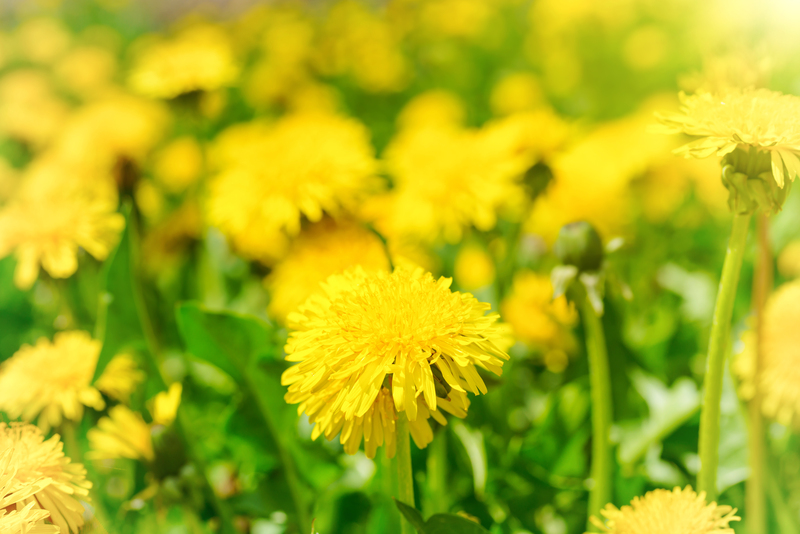Container gardening: a space-saving solution
Posted on 23/08/2025
Container Gardening: A Space-Saving Solution for Urban Living
Container gardening is transforming urban landscapes, allowing plant lovers to cultivate thriving gardens in limited spaces. Whether you live in a high-rise apartment, a townhouse with a small backyard, or simply want to enhance your patio or balcony, container gardening is a smart, adaptable, and beautiful way to unleash your green thumb.
What is Container Gardening?
Container gardening involves growing plants exclusively in pots, tubs, or other containers rather than directly in the ground. This method offers immense flexibility, making it possible for anyone--regardless of available space--to enjoy the rewards of gardening. It is ideal for people with limited room, poor soil conditions, or those who want to create movable, seasonal, or temporary gardens.
Benefits of Container Gardening
- Maximizes Small Spaces: Perfect for apartments, balconies, patios, rooftops, and small yards.
- Flexibility: Containers can be moved based on sunlight, weather, or personal preference.
- Easy Maintenance: Managing weeds, pests, and water needs is simpler than conventional gardens.
- Versatile Design: Use a variety of containers to add character and color to any space.
- Accessibility: With raised containers, urban gardeners and those with limited mobility find it much easier to tend their plants.
- Healthier Plants: Better control over soil quality and drainage helps foster robust growth.
- Year-Round Garden: Moveable containers make it easy to adjust to seasonal changes for year-round blooms or crops.

How to Start a Container Garden: Essential Steps
Assess Your Space
The first step in space-saving container gardening is assessing your available area. Consider locations like windowsills, stairways, balconies, rooftops, patios, or even indoor corners with ample sunlight.
- Light: Measure hours of sunlight to choose sun-loving or shade-tolerant plants.
- Wind: Identify places sheltered from strong winds that can topple tall containers or harm delicate plants.
- Weight: Ensure that your balcony or rooftop can safely bear the added weight of pots, soil, and water.
Selecting the Right Containers
Choosing appropriate containers is crucial for success in container gardening for small spaces. The container affects moisture retention, root space, and portability.
- Material: Clay, ceramic, plastic, wood, and metal are common options. Each has pros and cons -- while plastic is light and inexpensive, clay offers better breathability but is heavier.
- Size: Match container size to the plant's growth habits. Larger pots hold more soil, retain moisture longer, and allow deeper roots.
- Drainage: Ensure all containers have sufficient drainage holes to prevent waterlogged roots--a common problem in patio container gardens.
- Style: Don't be afraid to get creative! Upcycle old furniture, buckets, or baskets to add a personal touch to your compact container garden.
Choosing the Best Plants for Container Gardens
When planning your space-saving garden using containers, focus on adaptable plant varieties. Some of the best options for container gardens include:
- Herbs: Basil, mint, parsley, chives, rosemary, and thyme thrive in pots and are perfect for small spaces.
- Vegetables: Tomatoes, peppers, lettuce, radishes, eggplants, and dwarf carrots grow well in large containers.
- Fruits: Strawberries, dwarf citrus trees, blueberries, and figs are excellent for balcony container gardens.
- Flowers: Marigolds, petunias, geraniums, pansies, impatiens, and begonias provide colorful displays from spring through fall.
- Ornamental Plants: Ferns, succulents, small palms, and snake plants offer decorative greenery, especially for shaded spots.
Design Tips for a Thriving, Beautiful Container Garden
Mix and Match for Visual Appeal
Create eye-catching displays by combining plants with varying heights, textures, and colors. The classic formula for effective container garden design is:
- Thriller: The tallest or most dramatic plant as the focal point (e.g., dracaena, upright grass).
- Filler: Mid-level plants that add fullness and fill gaps (e.g., petunias, coleus).
- Spiller: Trailing plants that cascade over the container edges (e.g., ivy, sweet potato vine, lobelia).
Plan for the Seasons
Swap out plants as the seasons change to maintain year-round interest in your space-efficient container garden. For example, use tulips or daffodils in spring, switch to summer annuals, and add chrysanthemums or ornamental cabbages in fall.
Vertical Container Gardening
Vertical gardening maximizes your growing space by using walls, fences, or shelving units to elevate plants. Options include:
- Hanging baskets for flowers, strawberries, or trailing herbs
- Wall-mounted planters and pocket organizers for lettuces and succulents
- Stackable pots and tiered plant stands
Vertical solutions are especially smart for apartment dwellers and for those exploring space-saving gardening techniques.
Essential Care Tips for Container Gardens
Soil Matters
Use a high-quality potting mix designed for containers. Unlike garden soil, it offers appropriate drainage and aeration. Add slow-release fertilizers or organic compost to ensure steady nutrient supply.
Watering Wisely
- Potted plants typically dry out faster--regular, consistent watering is crucial.
- Water early in the morning or late afternoon to reduce evaporation.
- Check soil moisture by sticking a finger an inch deep--if it feels dry, water thoroughly until it drains from the bottom.
Feeding and Fertilizing
Frequent watering can leach nutrients from containers. Use liquid fertilizers or slow-release granules according to plant needs, supplementing with organic solutions such as worm tea or fish emulsion for robust growth.
Pest and Disease Management
- Monitor leaves and stems regularly for signs of aphids, fungus, or other pests.
- Encourage beneficial insects by interplanting herbs and flowers.
- Remove diseased foliage promptly and use organic sprays when necessary.
Creative Space-Saving Ideas for Container Gardens
Utilize Overlooked Spaces
- Railings: Attach railing planters to balconies or decks for instant color and herb access.
- Window Boxes: Unleash creativity with arrangements of flowers or salad greens right outside your window.
- Steps and Stairs: Display a series of pots on outdoor stairs to maximize vertical height and sunlight exposure.
Reuse and Upcycle
- Turn old kitchenware, baskets, or even boots into quirky plant containers.
- Dresser drawers and wheelbarrows can be repurposed as unique, rustic planters.
- Repurpose shipping pallets into vertical gardens or herb walls.
Common Challenges and Solutions in Container Gardening
Dealing with Limited Light
If your space receives less than six hours of sun per day, choose shade-loving plants--ferns, impatiens, and certain herbs like mint or parsley.
Managing Overcrowding
Avoid planting too densely, especially in small containers. Give each plant enough room to grow and allow air circulation to prevent disease.
Controlling Moisture and Drainage
- Always use containers with proper drainage holes.
- If plants wilt despite watering, roots may be drowning--check for clogs or too-fine soils.
- Consider self-watering containers for busy lifestyles.
Best Practices: Maintaining a Space-Saving Container Garden
- Rotate plants regularly for even light exposure.
- Prune and deadhead blooms to encourage new growth and maintain shape.
- Refresh soil annually or top-dress with compost for continued fertility.
- Sanitize containers between seasons to prevent disease buildup.
- Label plants for easy care and identification.

Getting Started: A Simple Container Garden Plan
Example Layout for Beginners
- 1 large container: Cherry tomatoes (center), with basil and marigolds (edges).
- 2 medium pots: Lettuce mix and dwarf carrots.
- Hanging basket: Trailing strawberries or herbs such as thyme and oregano.
- Small container: Colorful annuals such as pansies or violas for instant cheer.
With just a few pots and the right selection of plants, your own compact container garden can flourish in even the tightest of spaces.
Conclusion: Why Container Gardening is the Ultimate Space-Saving Solution
Container gardening offers a sustainable, flexible, and highly rewarding way to incorporate greenery into your daily life, regardless of your living circumstances. Its adaptability makes it the ideal solution for urban dwellers, busy families, and anyone seeking to maximize space efficiently. With careful planning, creative container choices, and attentive care, you can cultivate a lush, productive garden virtually anywhere. Whether you desire fresh herbs at your fingertips, beautiful flowers on your windowsill, or homegrown vegetables on a tiny balcony, container gardening is your answer to space-savvy gardening.
Explore the joys of container gardens--turn any nook, ledge, or rooftop into a vibrant, thriving oasis. Get started today and unleash the full potential of your small spaces!



